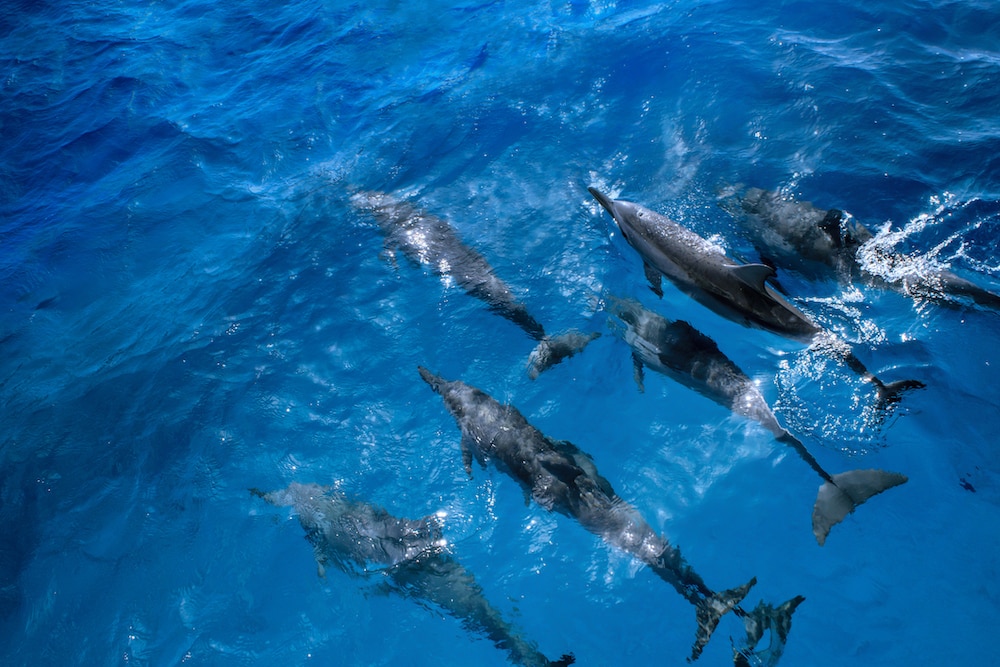Create a free profile to get unlimited access to exclusive videos, sweepstakes, and more!
Male dolphins have wingmen to help them make love connections
With a little help from their friends.

The TV show Flipper and the movie inspired by it both hinge on a unique social relationship between a dolphin and one or more humans. Those types of relationships, while unusual, are interesting because it’s so apparent that dolphins share a similar level of intelligence and social ability as we do. We can almost imagine, and often do, that under the right circumstances we might be friends.
Despite living in entirely different environments and experiencing entirely different lifestyles, dolphins develop and maintain complex social structures which exceed any other animal on the planet, save for humans. You might have a large following or friend list on the various social media platforms, but when it comes to real-world social connections, dolphins give us a run — or a swim — for our money.
In humans, two adults typically form an alliance in order to raise children. That primary alliance then extends to second order and third order alliances by way of extended families. We’ve developed large social structures as a consequence of the way in which we reproduce and raise our offspring. To that end, it has been previously thought that complex social structures were largely exclusive to humans and dependent upon that pair bonding. Male dolphins, however, don’t participate in the raising of young so it was unclear if or how they might establish these sorts of complex multi-level alliances. Now, an international team of scientists led by researchers at the University of Bristol may have cracked the case, and it all comes down to sex.
The study, published in the Proceedings of the National Academy of Sciences, tracked 121 adult male dolphins in Australia’s Shark Bay between 2001 and 2006. They found that the population was broken up into three levels of social connection which mirror, at least to some degree, the hierarchical social networks of humans.
On average, any individual adult male dolphin had two to three close associates. We can think of them as analogous to close friendships in people. They’re the folks dolphins spend most of their time hanging out with and the highest level of effort is spent on maintaining those relationships. These small friend groups spend their time patrolling the oceans, on the lookout for potential mates.
Those close-knit groups also had looser, but still well-defined, associations with second order networks of between four and 14 dolphins. Those are like people you’re cool with but don’t hang out with as often. You might not call them up for a night out, but they’re in your corner when the chips are down.
Those second order groups got called in when the usual wingmen (finmen?) weren’t effective enough and an individual needed more backup. These groups helped to support individuals in their efforts at finding a mate and defending potential mates against competitors.
Finally, multiple second order groups sometimes banded together into third-level alliances of up to 50 dolphins. Which level of social connection was utilized depended largely on how many competitors a group was facing.
While large social groups do exist in other animal species, dolphins are the only known non-human animal to exhibit third-level connections. What’s more, these close relationships pay off. Scientists found that reproductive success was more closely related to how well established the alliances were, as opposed to size. In essence, a smaller close-knit group could achieve more time spent with potential mates than a larger but less cooperative one.
While the level of connection increases the smaller the group is, researchers found that each of the 121 individual dolphins in Shark Bay had at least some connection to all of the other 120 in the area. They also found that those relationships can last for decades. Considering that dolphins don’t maintain longstanding relationships with reproductive partners, these underwater bromances are the closest, most important, and longest lasting relationships in their lives.
The findings lend some support to the social brain hypothesis, which suggests that some animals — humans included — developed large brains at least in part to navigate complex social relationships. In the end, all of our many varied accomplishments, our complex societies, our inventions, the creation of mathematics and the scientific method, might all trace themselves back to the primal desire for friends.


























